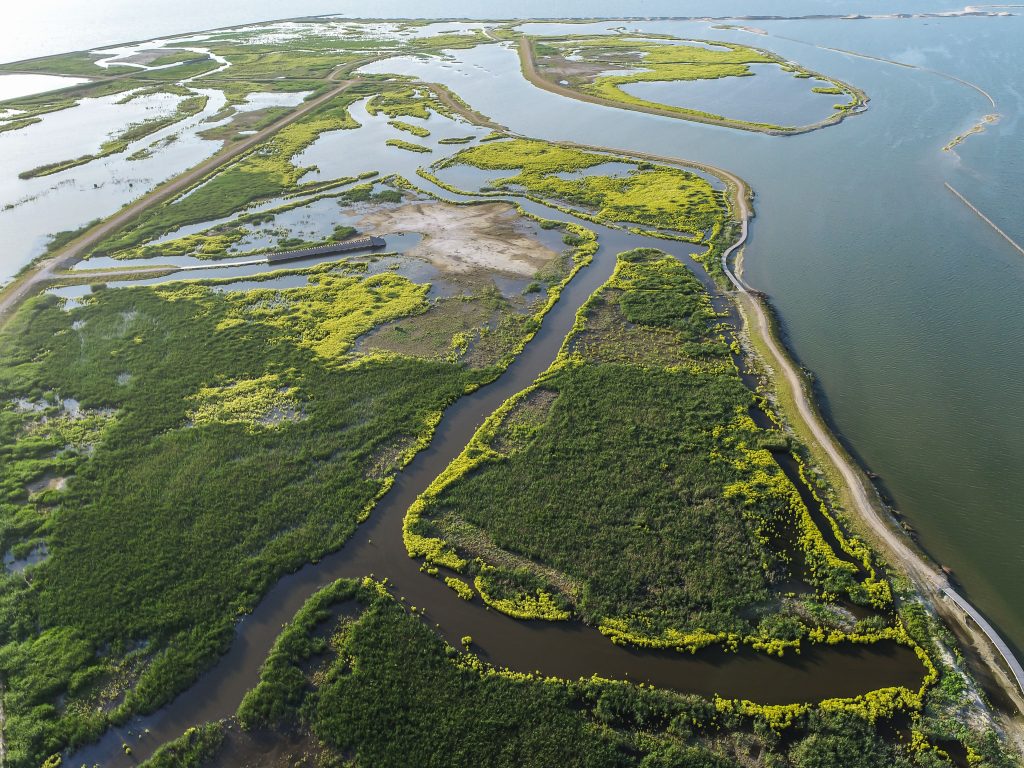More and more plants and animals can be found on the islands of the Marker Wadden. They include rare species such as the long-tailed duck, the little gull and the corncrake. At the KIMA conference in Amsterdam from 12-14 October, researchers will present the results of 5 years of research on the development of nature, building with mud and governance.
Minister Harbers: ‘I am impressed by the fast and successful development of the Marker Wadden. In just a few years, 47 types of breeding bird and 170 plant species have found their way here, making the area a successful international example of nature restoration. At the conference, a wide range of countries will come to see what they can learn: the study has produced a wealth of knowledge that can be applied in the rest of the world. This demonstrates that the Netherlands as a land of water cannot only conquer the water, but also work with water to achieve beautiful and healthy results.’

Recovery and improvement of nature around Marker Wadden
The Marker Wadden project has accumulated a great deal of expertise about building with sediment and about the ecological effects of measures of this kind. First of all, it has proven that growing numbers of birds are visiting the Marker Wadden because of the large supply of fish and insects, and the tranquillity and nesting locations, that the islands provide. The birds here include rare species.
In addition, it has emerged that vegetation grows well on the new islands. The material is nutrient-rich and the composition of the sediment creates variation in the ground elevation, furthering the development of nature. Even in the very first year, the Marker Wadden was home to new nature; the area has been further transformed every year, and researchers are finding more and different species.
Water quality to the east of the islands has also improved significantly. The area is already making an important contribution to national Natura 2000 goals by providing a wonderful habitat for many species of birds, some of them rare.
Example for other areas
At the conference, EcoShape director Stefan Aarninkhof and Fokko van der Goot (EcoShape Programme manager) presented the key successes of Marker Wadden, and explore together with the audience if and how these successes allow for upscaling elsewhere. Stefan: ‘There is global recognition that Nature-based Solutions can protect, manage, and restore natural or modified ecosystems, as well as providing human well-being and biodiversity benefits. However, there is still a lack of NbS projects being implemented at scale. Marker Wadden is considered as an iconic example of such large scale Nature-based Solution, and its lessons can be of great value for scaling up efforts globally.’
Partners
The study was conducted by the Marker Wadden Knowledge and Innovation Programme (KIMA), an initiative of Natuurmonumenten, Rijkswaterstaat, Deltares and EcoShape.
The KIMA is an alliance involving Rijkswaterstaat, Natuurmonumenten, Deltares, Wageningen Research, Witteveen+Bos, Arcadis, NIOO-KNAW, the University of Groningen, Radboud University and the University of Amsterdam.
You can find more information about the research on the Marker Wadden on www.kennismarkerwadden.nl.
